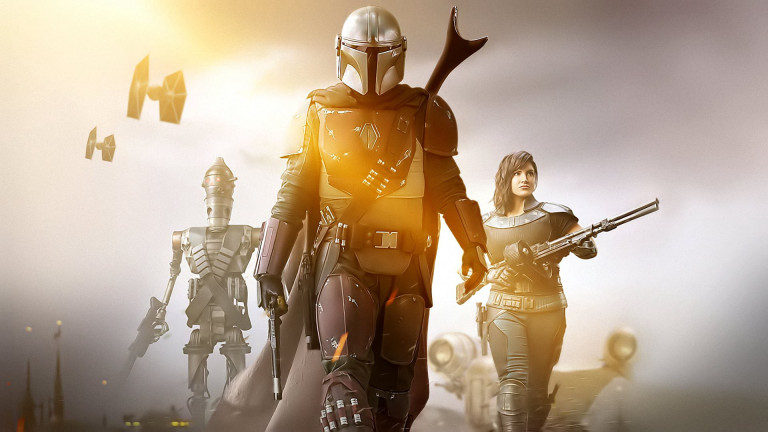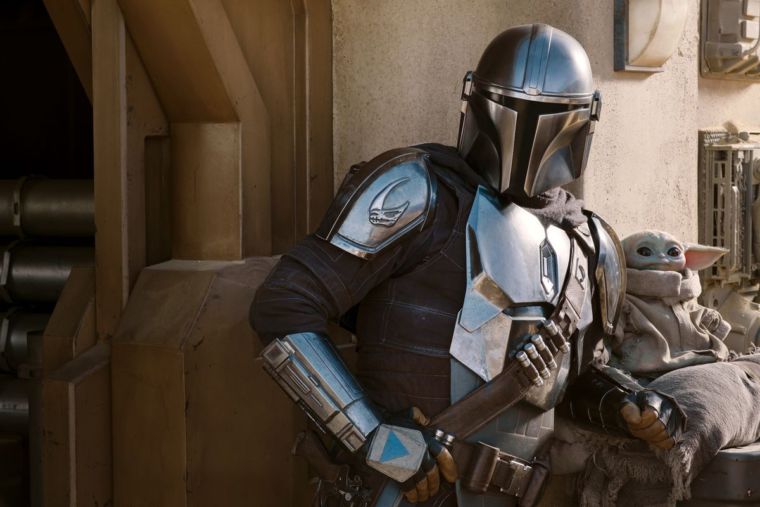A little over a year ago, The Mandalorian made its entrance onto the then-new streaming service, Disney+. The series was one of the first to make it onto the site – and, as with the MCU, likely acted as a significant draw to plenty of people who may otherwise have maintained their allegiance with other services like Netflix and Amazon.
This stands in stark contrast with the atmosphere that has surrounded Disney’s involvement with the Star Wars franchise since 2012 – and particularly over the last five years, as Episodes VI, VII and IX made their way out of production.

Star Wars boasts one of the most dedicated fanbases in history, and that dedication grew infamously polemical throughout the release of the third trilogy. Even those who do not know the films, and who would struggle to differentiate between Chewie and Jabba, are likely well-versed in some of the most vehement arguments against Disney’s interpretation of the saga.
But, given that The Mandalorian is once again stamped with Disney’s seal of approval, how has the series managed to rise to such popularity? The Star Wars fanbase exists in a notorious state of frustration, and yet the first season of The Mandalorian has completed its rounds – seemingly without a scratch on it.
Star Wars
It may be an exaggeration to say that Star Wars Episodes VII, VIII and IX bombed entirely, but the entire trilogy was marred by a general feeling – particularly among the franchises longest serving fanbase – that Disney took a heavy handed approach, and disregarded a lot of the character development and world building that had, until recently, defined the entire saga.
Some took issue with casting, while others felt that attempts at humour – while successful in the original trilogy, and a source of contention in the prequels – were simply too butterfingered to preserve any emotional resonance the movies may have otherwise had.
Others felt that political zealotry, such as giving the lead role to a woman, had the saga in a chokehold, while others simply didn’t like the fact that Luke would go so far as to milk an alien.
In short, there was very little that did not enrage pockets of the Star Wars fanbase – and if it didn’t enrage one, it enraged another. The films proved to be almost as profitable as the prequals, of course, but reams of hypercritical critic- and fan-reviews represent just the tip of the iceberg for Disney.

The Mandalorian
By contrast, The Mandalorian was released a little over a month before Episode IX. It has since received a slew of positive reviews from fans and critics, and its long-awaited second season was released to significant buzz on social media.
Yes, it is true that The Mandalorian had social media on its side. For instance, The Child, otherwise known as Baby Yoda, appealed to fans and strangers to the entire Star Wars franchise alike. He enjoyed quite a heyday within meme culture throughout 2020, and, as Disney’s oh-so-likely posterchild for the series, likely drew in plenty more subscribers for the service.
The Child features all the physical traits of a character that would inevitably prove successful – both among digital audiences and consumers. That, in and of itself, is firmly in accordance with Disney’s heavy handed approach toward the saga. If the past few years are anything to go by, die-hard fans should be revolting against The Mandalorian with all the sound and the fury they handed to the Porgs, who feature the same big round eyes, short stature, and bewildered facial expressions that made The Child such an instant success.
The Difference
Disney’s motivations behind The Mandalorian remain the same: they are masters of spinning a franchise in their financial favour, and we are all keenly aware of that fact.
One of the main differences between the two is the fact that the series tears away from the format Star Wars has been following for more than forty years. As a series rather than a film trilogy, The Mandalorian is free to follow a more modern format, rather than pursuing the same three-act structure exemplified by the movies.
TV series in general are experiencing a great deal of popularity over and above traditional cinema – particularly for genres and franchises that hold very particular and, at times, fussy fanbases. Netflix, for instance, is on a mission to adapt a long list of video game franchises into original series, while Disney+ has plans to utilise the format for its growing MCU over the next few years.
A series offers an indefinite timeframe in which to explore a world and its characters. Perhaps some of the pressures felt by Disney during the production and release of Episode’s VII, VIII and IX stemmed from a strong sense of finality: with no plans for a fourth trilogy, the sad loss of original cast members, and others, like Ford and Hamill, simply growing too old to carry an entire franchise for another three instalments, many were all too aware of this being the end.
Fans criticised Episode VIII for wasting time on a subplot in the Canto Casino – although a quick mission to another planet is archetypal for the franchise. When we consider the movies in light of their own finality, however, the upset begins to make sense.
The Mandalorian is a fresh beginning, and one which needn’t be taken away from us as soon as we find some emotional investment. With the open-ended continuation of the Star Wars galaxy, fans can forgive a little commercialised character design, the odd contradiction or missed opportunity, and one or two meandering subplots. There is enough time that some can afford to be wasted, and fans are grateful for it.
